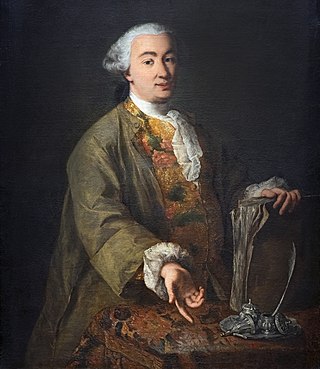
Carlo Osvaldo Goldoni was an Italian playwright and librettist from the Republic of Venice. His works include some of Italy's most famous and best-loved plays. Audiences have admired the plays of Goldoni for their ingenious mix of wit and honesty. His plays offered his contemporaries images of themselves, often dramatizing the lives, values, and conflicts of the emerging middle classes. Though he wrote in French and Italian, his plays make rich use of the Venetian language, regional vernacular, and colloquialisms. Goldoni also wrote under the pen name and title Polisseno Fegeio, Pastor Arcade, which he claimed in his memoirs the "Arcadians of Rome" bestowed on him.
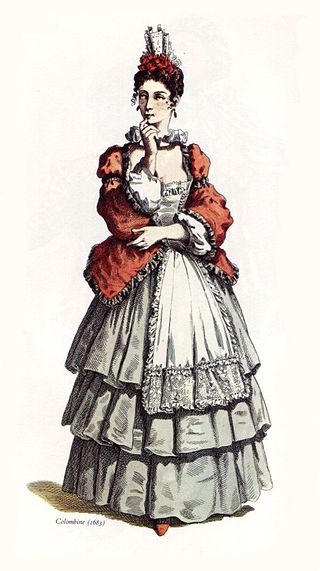
Columbina is a stock character in the commedia dell'arte. She is Harlequin's mistress, a comic servant playing the tricky slave type, and wife of Pierrot. Rudlin and Crick use the Italian spelling Colombina in Commedia dell'Arte: A Handbook for Troupes.
This article contains information about the literary events and publications of 1750.

Carlo, Count Gozzi was an Italian (Venetian) playwright and champion of Commedia dell'arte.
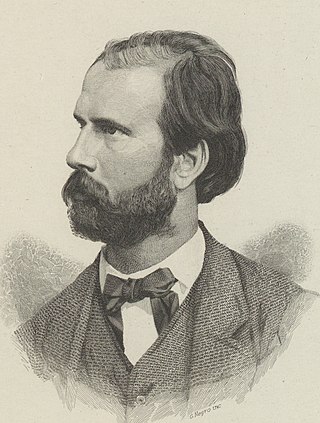
Enrico Gamba was an Italian painter of genre scenes, period pieces and a few portraits.

The Servant of Two Masters is a comedy by the Italian playwright Carlo Goldoni written in 1746. Goldoni originally wrote the play at the request of actor Antonio Sacco, one of the great Harlequins in history. His earliest drafts had large sections that were reserved for improvisation, but he revised it in 1789 in the version that exists today. The play draws on the tradition of the earlier Italian commedia dell'arte.
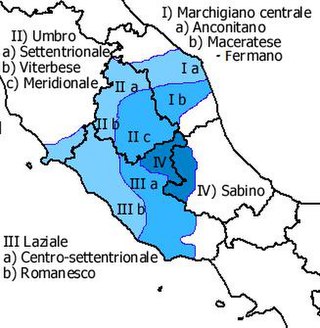
]
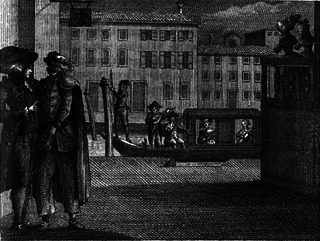
The Liar is a comedy by Carlo Goldoni. It was written as part of Goldoni's fulfilment of a boast that he had inserted into the epilogue to one of his plays that for the next season he would write sixteen comedies. The Liar, along with the fifteen other comedies, was staged in the 1750–51 season at the Teatro San Angelo in Venice. It draws on commedia dell'arte conventions and stock characters.

Carlo Zecchi was an Italian pianist, music teacher and conductor.

The Piccolo Teatro di Milano is a theatre in Milan, Italy. Founded in 1947, it is Italy's first permanent theatre, and a national "teatro stabile", or permanent repertory company, and is considered a theatre of major national and European importance. The theatre has three venues: Teatro Grassi, in Via Rovello, between Sforza Castle and the Piazza del Duomo; Teatro Studio, which was originally intended to be the theater's rehearsal hall; and Teatro Strehler, which opened in 1998 with a seating capacity of 974. Its annual programme consists of approximately thirty performances. In addition, the venue hosts cultural events, from festivals and films, to concerts, conferences, and conventions, as well as supporting the Paolo Grassi Drama School.

Gaetana Goldoni Andolfati was an actress, mainly in comedy, and active mainly in Northern Italy.

Pietro Andolfati was an actor and troupe director, active mainly in Northern Italy, mainly of comedies. He is also known as Pietro Attore Andolfatti.

Antonio Dal Zòtto was an Italian sculptor.
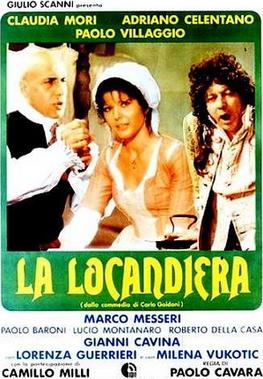
La locandiera is a 1980 Italian comedy film directed by Paolo Cavara, based on the Carlo Goldoni's three-act comedy The Mistress of the Inn.

The Teatro Capranica is a theatre situated at 101 Piazza Capranica in the Colonna district of Rome. Originally constructed in 1679 by the Capranica family and housed in the early Renaissance Palazzo Capranica, it was the second public theatre to open in Rome. It was the site of many premieres of Baroque operas including Caldara's Tito e Berenice, Scarlatti's Griselda, and Vivaldi's Ercole su'l Termodonte. The Capranica ceased operating as a full-scale theatre and opera house in 1881 and in 1922 was converted into a cinema. Following the closure of the cinema in 2000, it has functioned on a hire basis as a conference and performance venue.
Giuseppe Maria Buini was an Italian composer, organist, librettist and poet. He was a prolific composer of operas, primarily in the opera buffa genre, which were performed in Venice and his native Bologna. Unusually for the period, he also wrote many of the libretti himself. Several of his comic opera libretti were subsequently re-set by other composers. According to Edward Dent, their influence can also be seen in the libretti which Carlo Goldoni later wrote for Baldassare Galuppi. Very little of his music has survived, apart from a book of sonatas for violin and cello and a few individual arias and cantatas.
The Fan is a 1763 comedy by Carlo Goldoni. It was first produced as L´éventail in Paris at the Théâtre de la comédie italienne in May 1763, with little success. The French version is lost. Goldoni revised the play during 1764 as Il Ventaglio and it was premiered at the Teatro San Luca, Venice, in February 1765 with great success.
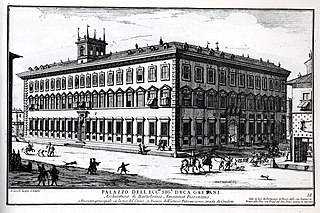
The Palazzo Ruspoli is a Renaissance-style, 16th century aristocratic palace located on Via del Corso 418, where Corso intersects with Largo Carlo Goldoni and the Piazza di San Lorenzo in Lucina, in the Rione IV of Campo Marzio in central Rome, Italy.
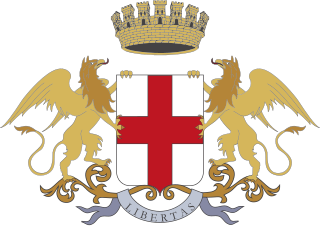
Gian Carlo Pallavicino was the 179th Doge of the Republic of Genoa.

The theatre of Italy originates from the Middle Ages, with its background dating back to the times of the ancient Greek colonies of Magna Graecia, in Southern Italy, the theatre of the Italic peoples and the theatre of ancient Rome. It can therefore be assumed that there were two main lines of which the ancient Italian theatre developed in the Middle Ages. The first, consisting of the dramatization of Catholic liturgies and of which more documentation is retained, and the second, formed by pagan forms of spectacle such as the staging for city festivals, the court preparations of the jesters and the songs of the troubadours.














